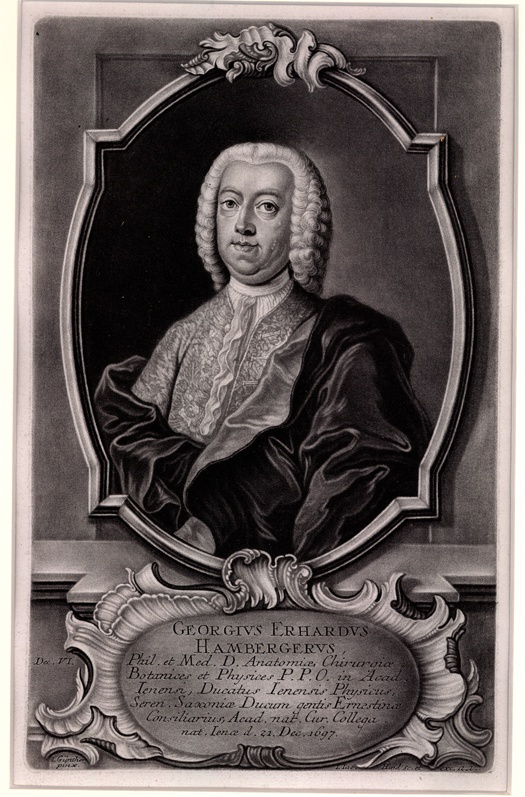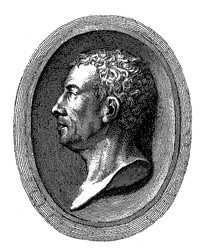Johann Jacob Haid schuf 1747 das Schabkunstblatt nach einem Gemälde von Johann Günther, der durch Bildnisse von Professoren der Jenaer Universität Bekanntheit erlangte. Georg Erhard Hamberger (1697-1755) lehrte an der Universität Jena, er war der letzte große Vertreter der mathematisch-mechanischen Medizin. 1741 besuchte Winckelmann als Student Hambergers Lehrveranstaltungen. Obgleich er nach einigen Monaten die Universität wieder verließ, hatte Winckelmann seine Begeisterung für Medizin und Naturwissenschaft nie ganz aufgegeben.
Singiert: I. Günther pinx./ Dec. VI / I. Iac. Haid sc. et exc. A. V.
Bildunterschrift: GEORGIVS ERHARDVS HAMBERGERVS , Phil. et. Med. D. Anatomiae, Chirugiae, Botanices et Physices P.P.O. in Acad. Ienensi, Ducatus Ienensis Physicus, Seren. Saxoniae Ducum gentis Ernestinae Consiliarius Acad. nat. Cur. Collega. nat. ienae d. 21. Dec. 1697
en

